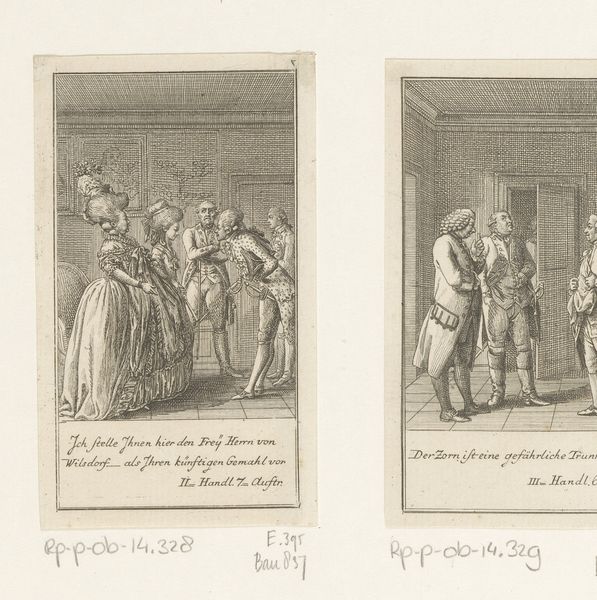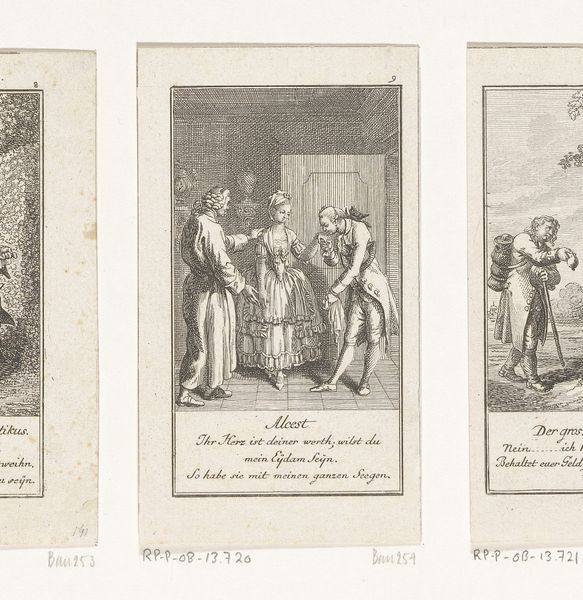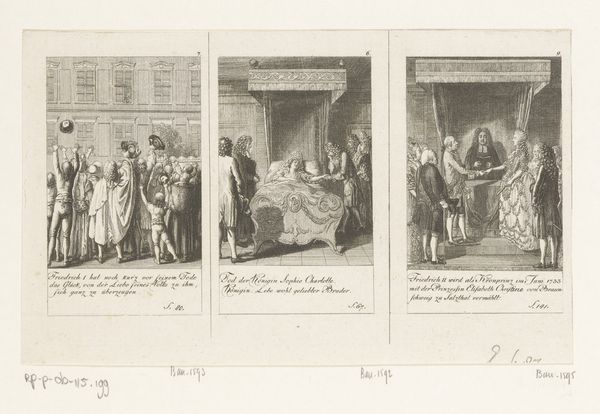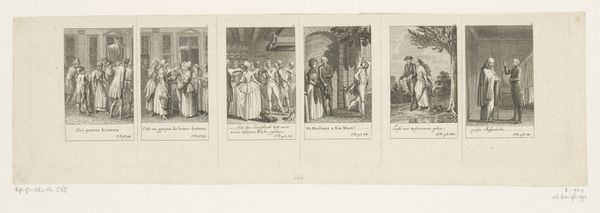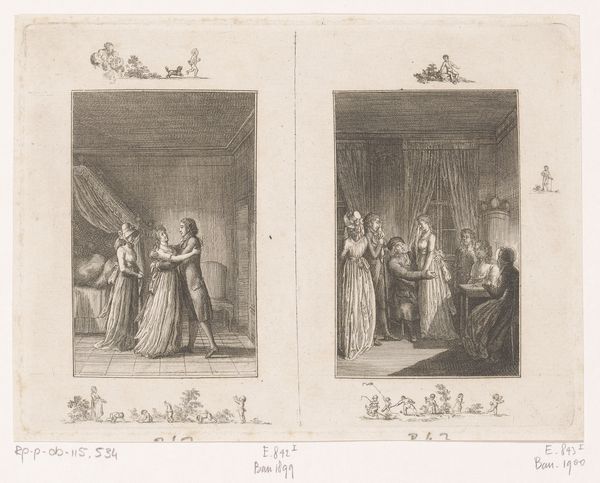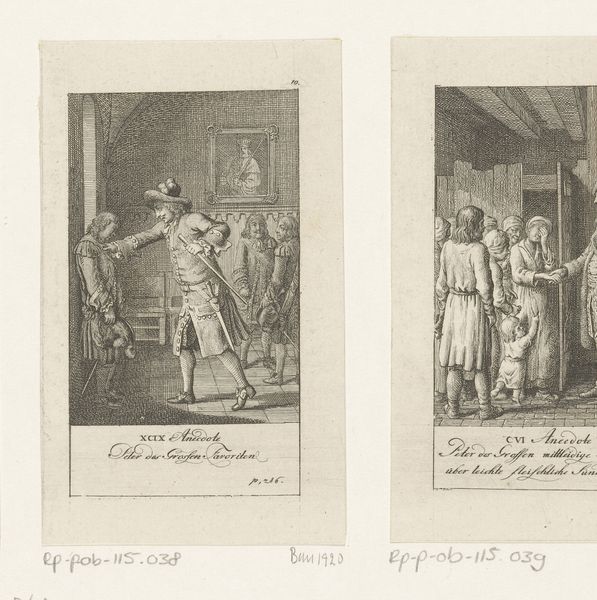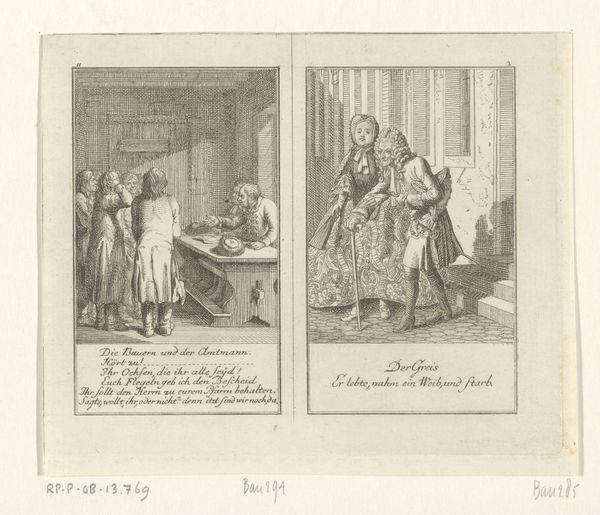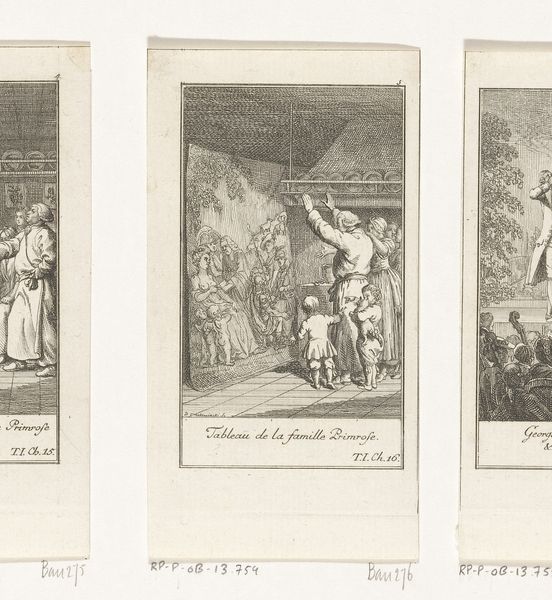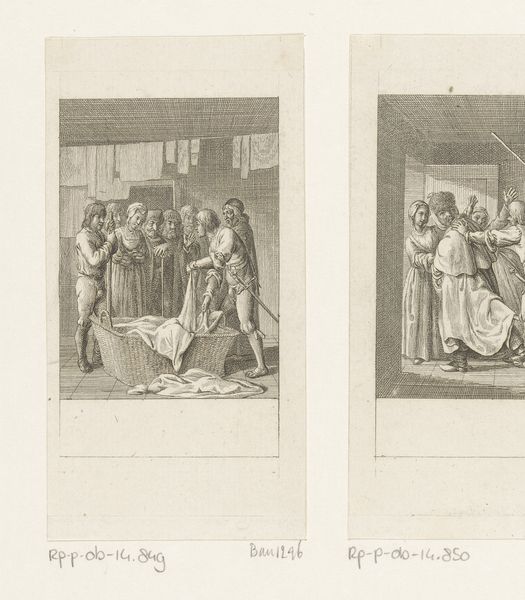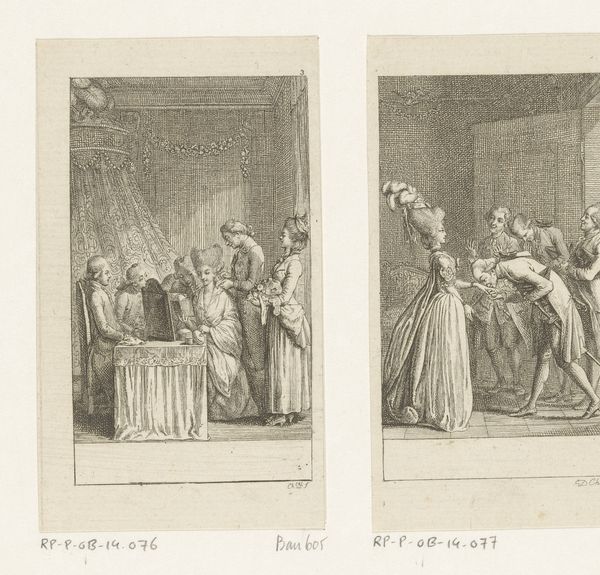
Drie voorstellingen uit William Shakespeares Merry Wives of Windsor 1786
0:00
0:00
print, engraving
#
neoclacissism
# print
#
genre-painting
#
history-painting
#
engraving
Dimensions: height 111 mm, width 190 mm
Copyright: Rijks Museum: Open Domain
Curator: Look at this detailed print by Daniel Nikolaus Chodowiecki, titled "Three Scenes from Shakespeare’s Merry Wives of Windsor," created in 1786. Editor: My first impression is that this image speaks to the visual language of storytelling. The neoclassical style provides a structured narrative with hints of comedy. Curator: Indeed! As a work deeply embedded in the late 18th-century, this piece reflects the increasing popularity of Shakespeare within the European cultural sphere, demonstrating how literary themes permeated into the visual arts. Editor: It is an interesting portrayal of theatre’s impact on culture, making plays accessible via imagery. It gives agency to stories through common scenarios presented in panelled forms. There’s a lot of information compressed into such small frames; the engraving provides high visual detail. Curator: Chodowiecki used engraving to offer clarity and precision to communicate the narratives, which ties neatly with neoclassical sensibilities. He successfully captured a light tone, contrasting it with a focus on social observations, revealing societal preoccupations during this time. The settings mirror those in Shakespeare's comedies. Editor: Precisely, each mini-scene portrays elements and symbolic cues relevant to human emotions and conflicts presented within "The Merry Wives". They show themes of mistaken identity, social aspirations and satire and how the images themselves reflect a rise of domestic drama. Curator: Each scene acts as an emotional and cultural symbol; from romance to confusion, the narrative themes reflect how psychological stories develop. Its composition promotes recognition and familiarity through cultural continuity. Editor: A remarkable exploration. By analyzing “Three Scenes from Shakespeare’s Merry Wives of Windsor” we uncovered how themes like storytelling have maintained visibility across media, carrying shared memories. Curator: Thank you; it serves as an important reminder of art’s capacity to portray historical narratives.
Comments
No comments
Be the first to comment and join the conversation on the ultimate creative platform.
